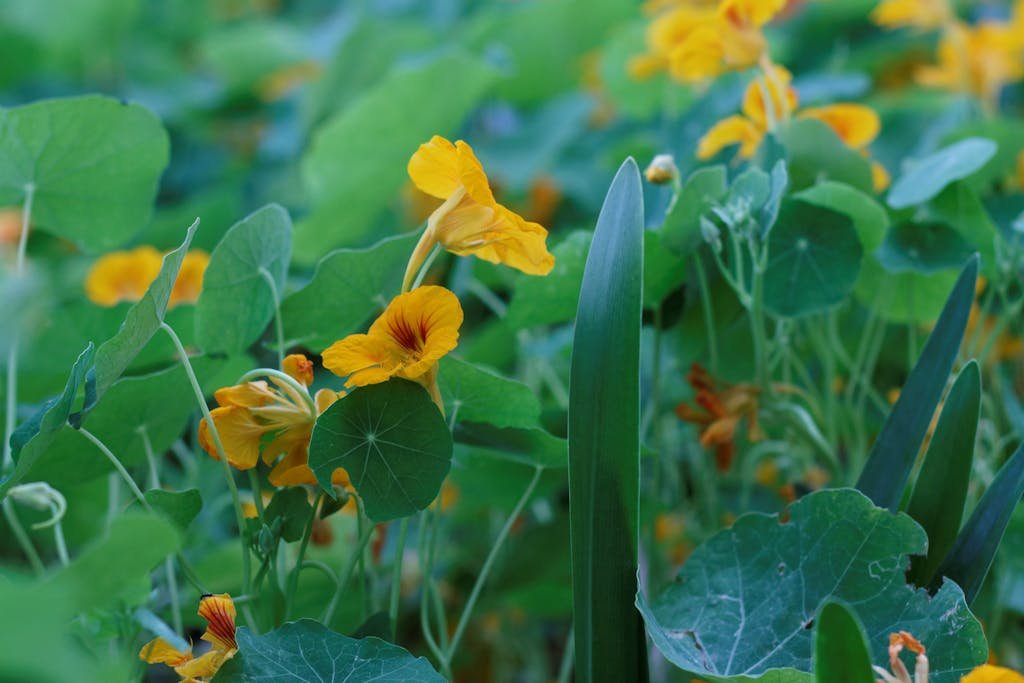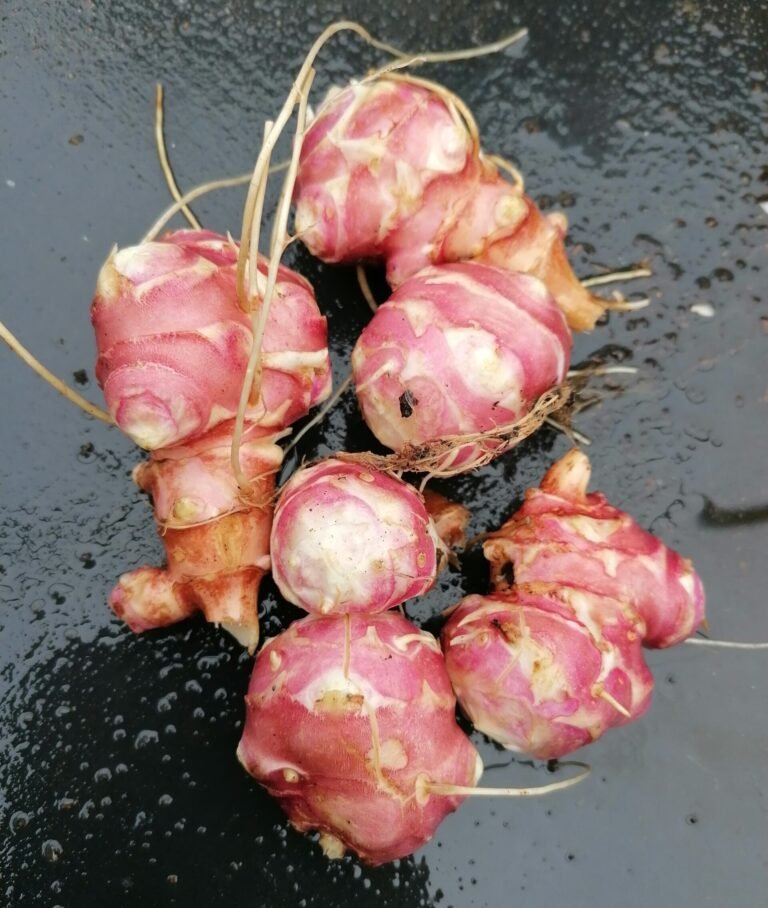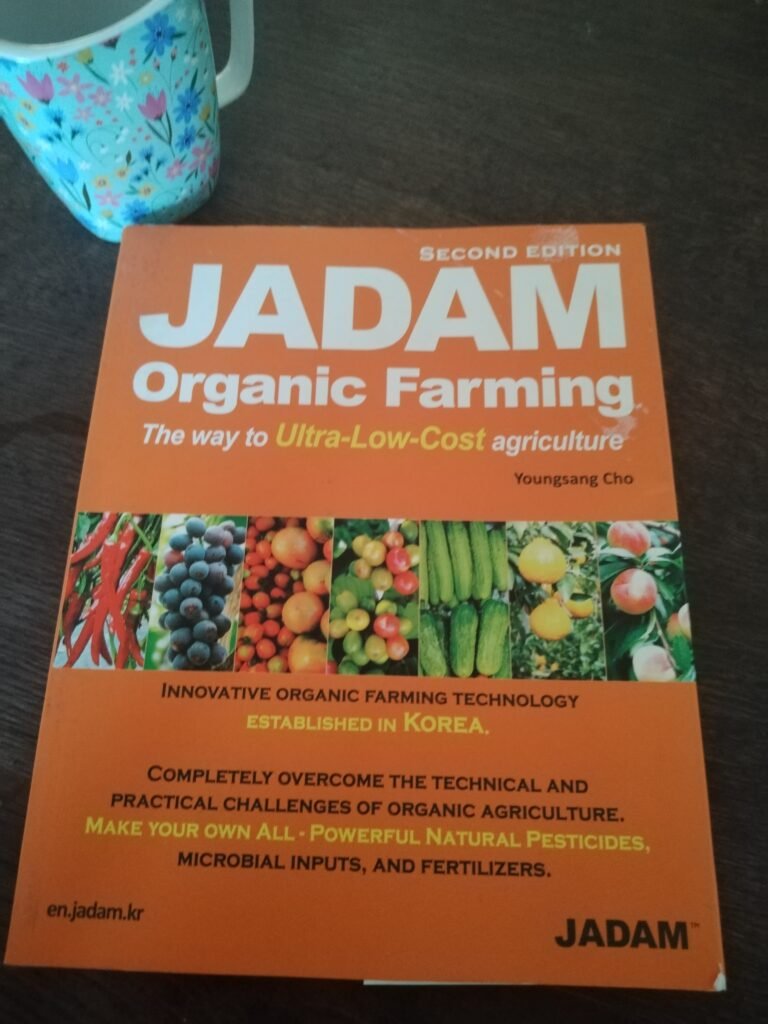


If there’s one lesson the garden teaches us over and over, it’s that everything thrives a little better with good company. And nowhere is that truer than with tomatoes. Choosing the best companion plants for tomatoes isn’t just an old wives’ tale. It’s one of nature’s simplest secrets for a healthier, more abundant harvest.
When we tuck the right plants beside our tomatoes, we’re doing more than just filling space. We’re weaving a living, breathing tapestry of support. Some companions fend off pests, others enrich the soil, and a few simply create a lush, harmonious microclimate. All this is where tomatoes can bask in the glory of summer. It’s the kind of quiet magic that turns a garden bed into a little sanctuary, buzzing with life and bursting with flavor.
Over the seasons, I’ve learned that pairing tomatoes with their favorite friends is one of the easiest ways to grow a thriving, low-maintenance garden. And in small spaces, where every inch matters, it’s not just smart—it’s essential. Think basil perfuming the air and marigolds warding off invaders. It’s like building a tiny community where everyone pulls their weight and the tomatoes get to be the star of the show.
Ready to dive into the most powerful plant pairings? Let’s explore the companions that will help your tomatoes—and your garden—flourish in ways you can taste, see, and feel.
Why Companion Planting Works for Tomatoes
If there’s one simple thing that can transform your tomato patch into a lush, thriving paradise, it’s good companion planting. Rather than treating each plant as an island, companion planting invites them to work together—protecting, feeding, and supporting one another in the most natural way possible. Here’s how it benefits your tomatoes in beautiful, practical ways:
Natural Pest Control Without Chemicals
First and foremost, companion planting helps fend off pests naturally, saving you from reaching for chemical sprays. Plants like marigolds, nasturtiums, and basil release natural compounds or aromas that confuse or repel common tomato pests like aphids, whiteflies, and hornworms. It’s nature’s own pest management system—safe, gentle, and incredibly effective. Plus, you’ll attract more beneficial insects who will happily hunt down any stragglers.
Improved Pollination and Fruit Set
Secondly, surrounding your tomatoes with the right companions invites a parade of pollinators into your garden. Herbs like borage and flowers like calendula lure bees and butterflies to the area, increasing the chances that every delicate tomato blossom gets properly pollinated. More pollination means more fruit—and there’s nothing sweeter than watching your vines heavy with ripening treasures.
Better Nutrient Sharing and Soil Health
In addition, certain companion plants play a vital role in enhancing soil health. Deep-rooted companions like carrots and radishes break up the soil, improving airflow and water absorption. Meanwhile, legumes such as dwarf bush beans fix nitrogen into the soil, gently enriching it without the need for synthetic fertilizers. This underground teamwork keeps your tomatoes well-fed and flourishing all season long.
Space Optimization for Small Gardens and Raised Beds
Finally, for those of us squeezing every bit of goodness out of small spaces, companion planting is pure magic. By layering different heights, root depths, and growth habits together, you can fit far more into a raised bed or a tiny backyard plot than you ever thought possible. Imagine dwarf beans nestling at the feet of towering tomato vines, basil filling in the gaps, and marigolds ringing the borders—all growing in harmony, all working together to create a garden that’s as efficient as it is enchanting.
The Best Companion Plants for Tomatoes
When you pair tomatoes with the right companions, the whole garden seems to hum with energy and life. Each of these plants brings a special gift to the mix—whether it’s better flavor, natural pest control, or simply making the most of your precious growing space. Let’s dive into the dream team:
Basil: Improves Flavor, Deters Hornworms
There’s a reason basil and tomatoes are best friends both on the plate and in the garden. Not only does basil’s aromatic magic enhance the flavor of your tomatoes, but it also helps keep hornworms at bay. Plus, there’s just something delightful about brushing past a tomato patch that smells faintly of fresh basil on a warm afternoon.

Marigolds: Repel Nematodes and Aphids
Next up, the cheerful marigold! These sunny little powerhouses do more than brighten up your beds—they send root-knot nematodes and aphids packing. Their strong scent acts like a protective barrier, making marigolds a must-have for any tomato lover wanting to garden naturally.

Carrots: Loosen Soil Around Tomato Roots
Carrots might seem like humble neighbors, but don’t overlook their hidden talents. Their slender roots gently break up the soil, improving drainage and allowing tomato roots to stretch deeper. It’s a quiet kind of teamwork that creates a healthier, happier root zone without any extra work from you.

Garlic and Onions: Protect Against Fungal Diseases
Garlic and onions aren’t just kitchen essentials—they’re fierce defenders of your tomato patch, too. Their pungent compounds help guard against fungal diseases like blight, acting almost like a living shield around your tomatoes. Tuck a few bulbs nearby and let their natural defenses get to work.
Lettuce and Spinach: Low-Growing Crops That Thrive in Tomato Shade
As your tomato vines reach for the sky, why not make use of the cool, shaded soil underneath? Lettuce and spinach love a bit of protection from harsh summer sun, making them perfect low-growing companions. It’s a smart way to double your harvest without taking up extra space.
Nasturtiums: Trap Pests Like Aphids Away from Tomatoes
If pests are a problem, nasturtiums come to the rescue! These beautiful, trailing flowers act as sacrificial plants, luring aphids, whiteflies, and even beetles away from your precious tomatoes. Meanwhile, you get to enjoy their vibrant blooms all season long.

Chives: Improve Tomato Taste and Fight Powdery Mildew
Tiny but mighty, chives are an incredible ally for tomatoes. They’re known to subtly improve tomato flavor—and their antifungal properties help ward off powdery mildew and other common diseases. Plus, their delicate purple flowers bring a lovely pop of color to your tomato bed.
Calendula: Attracts Beneficial Pollinators
Calendula, often called “pot marigold,” works wonders by drawing bees, hoverflies, and other beneficial insects to your garden. These hardworking pollinators make sure every tomato flower gets the attention it deserves, boosting your overall fruit set beautifully.
Dwarf Bush Beans: Fix Nitrogen, Suppress Weeds, and Add a Second Edible Crop Without Competing for Light
Finally, dwarf bush beans offer a three-for-one deal! They pull nitrogen from the air and add it back into the soil, helping to feed your tomatoes naturally. Their compact size keeps weeds in check, and since they don’t compete for sunlight, you’ll enjoy a second delicious crop growing right alongside your tomatoes without any fuss.
What NOT to Plant Near Tomatoes
Of course, as much as companion planting can work wonders, some neighbors just don’t get along—and tomatoes are no exception! While planning your garden bed, it’s just as important to know who not to invite to the party.
Why Corn, Fennel, Cabbage Family, and Potatoes Are Bad Neighbors
First off, corn and tomatoes may seem harmless enough growing side by side, but they actually attract the same pests—especially the dreaded corn earworm and tomato fruitworm. Yikes! By planting them together, you’re practically rolling out a welcome mat for trouble.
Fennel, on the other hand, tends to be a bit of a garden loner. It releases compounds into the soil that can inhibit the growth of nearby plants, including your tomatoes. Better to give fennel its own corner of the garden far, far away.
Now, let’s talk about the cabbage family—broccoli, cauliflower, kale, and friends. These heavy feeders can hog nutrients in the soil, leaving your tomatoes struggling to keep up. Plus, the dense foliage of cabbages can block airflow, which tomatoes need to stay disease-free.
Finally, potatoes might seem like a clever idea (both nightshades, right?) but planting them near tomatoes doubles the risk of blight spreading like wildfire between the two. When in doubt, it’s best to keep these cousins at a respectful distance.
Common Mistakes Gardeners Make with Companion Planting
Even with the best intentions, it’s easy to make a few classic companion planting mistakes. For example, packing too many companions too close can lead to poor airflow, creating the perfect breeding ground for fungal diseases.
Another mistake? Ignoring sunlight needs. Tomatoes are sun lovers through and through—so placing tall, shade-casting plants nearby can stunt their growth before you even realize what’s happening.
And finally, don’t forget about root competition! Some plants have aggressive root systems that can crowd out your tomato roots, even if everything looks fine above ground. A little thoughtful planning goes a long way toward a thriving, happy tomato patch!
Smart Layouts: Packing the Bed Without Crowding
When it comes to companion planting, getting the right mix of plants into a single bed is an art form—and a little planning goes a long way. After all, we want a lush, thriving garden, not a tangled jungle!
Companion Plant Spacing Tips for Tomatoes
First things first, tomatoes need a bit of breathing room to really stretch their roots and soak up that glorious sun. Ideally, you’ll want to space tomato plants about 18 to 24 inches apart. However, when adding companions, it’s important to tuck in smaller plants (like basil or lettuce) in the gaps without choking your main stars. Think of it like setting a cozy but respectful dinner table—everyone needs their own elbow room!
Layering Low, Middle, and Tall Crops Together
Next, let’s talk about layering. One of the smartest tricks for maximizing your space without creating chaos is using crops of different heights. 🪴 For instance, low-growers like spinach and lettuce can happily carpet the soil beneath your tomatoes, helping to suppress weeds and keep the soil cool. Mid-height buddies like bush beans and marigolds can fill the middle layer, while towering tomato plants climb up stakes or cages above. That way, every layer of the garden is working for you!
Example Bed Layouts for Small, Medium, and Large Gardens
Of course, not every garden bed is the same size. In a small garden, you might group one or two tomato plants with a few basil, marigold, and lettuce plants. In a medium bed, you could stagger tomatoes down the center, flanked by carrots and nasturtiums. For a large garden, you can truly get creative—interweaving dwarf bush beans, calendula, chives, and a cheerful border of spinach or arugula. The possibilities are endless once you start thinking in layers and groups rather than straight lines!
Vertical Growing Tips: Stakes, Cages, and Trellises for Efficiency
Finally, don’t underestimate the magic of growing up, not just out. Using stakes, cages, or trellises for your tomatoes frees up tons of ground space for companion plants to flourish underneath. Plus, better airflow around the tomatoes means fewer issues with pests and disease. Whether you’re using a simple wooden stake, a classic tomato cage, or a beautiful DIY trellis, vertical growing transforms a crowded bed into a beautifully orchestrated garden symphony!
DIY Companion Planting Tips for Maximum Growth
If you want your tomatoes — and their trusty companions — to truly thrive, it all starts with good timing. Not every crop should go into the soil at the same moment. Plant your cool-weather friends like lettuce and spinach early, while the days are still gentle. Then, once the soil warms and your tomatoes are strong enough to take center stage, introduce sun-loving partners like basil, beans, and nasturtiums. Staggering your planting not only fills every inch of your garden with life but also protects tender seedlings from harsh conditions.
Next up: soil prep. Think of your garden bed as a banquet table — it needs to be rich, welcoming, and full of goodness. Work in plenty of compost before planting, and don’t be shy about using homemade natural fertilizers like worm castings or compost tea. This way, you’re not just feeding the tomatoes; you’re nourishing the whole community of plants right from the roots up.
As your garden grows into its lush little ecosystem, regular pruning becomes your best friend. Keep tomatoes neatly trimmed to improve airflow, snip spent flowers from companions like basil, and encourage bush beans to stay tidy and productive. A little maintenance goes a long way toward preventing disease and boosting harvests.
And finally, let’s not forget the magic of mulch. A thick, cozy layer of straw, shredded leaves, or untreated wood chips will lock in moisture, smother weeds before they start trouble, and slowly break down into even more soil goodness. In a thriving companion bed, mulch isn’t just an afterthought — it’s the secret ingredient that keeps the whole symphony playing in tune.
Best Tomato Supports to Combine with Companion Planting (Affiliate Section)
When it comes to keeping your tomato jungle neat and thriving, a good support system makes all the difference. In 2025, gardeners have more options than ever, from sturdy, top-rated cages to flexible trellises that practically disappear into the greenery. Whether you prefer the classic look of heavy-duty tomato cages or the sleek lines of vertical stakes, these trusted tools help lift your plants high, giving companions like basil, carrots, and lettuce room to breathe beneath their shady canopy.
Of course, securing those vines gently is just as important as choosing the right frame. Soft plant ties, reusable clips, and biodegradable garden twine make it easy to guide your tomatoes skyward without bruising tender stems. These simple, affordable tools also make maintenance a breeze, letting you tidy up fast without disturbing nearby companions.
If you’re working with a smaller space — think patios, containers, or compact raised beds — don’t worry. There are brilliant small-space supports available too, including stackable cages, folding trellises, and even adjustable stake systems that grow along with your plants. No matter how little your garden footprint, there’s a clever way to go vertical without cramping your style.
Final Thoughts: Growing More with Less
Our small farm, with just three polytunnels, is proof that companion planting can transform a limited space. By choosing the right companions, we’ve made the most of every inch. What once seemed like a small area is now a thriving, productive space. Tomatoes thrive, soil stays healthy, and harvests are bigger than ever — all thanks to these natural partnerships.
Companion planting helps our plants stay strong. It keeps pests at bay and improves resilience to diseases. Whether it’s basil alongside tomatoes or marigolds between rows, each plant contributes to a balanced ecosystem. In a small space like ours, this synergy is key.
We’ve learned that a garden doesn’t need to be vast to be bountiful. Companion planting maximizes what we have, and we’ll continue to rely on it. For more tips on growing tomatoes, check out our guide on how to grow tomatoes.






